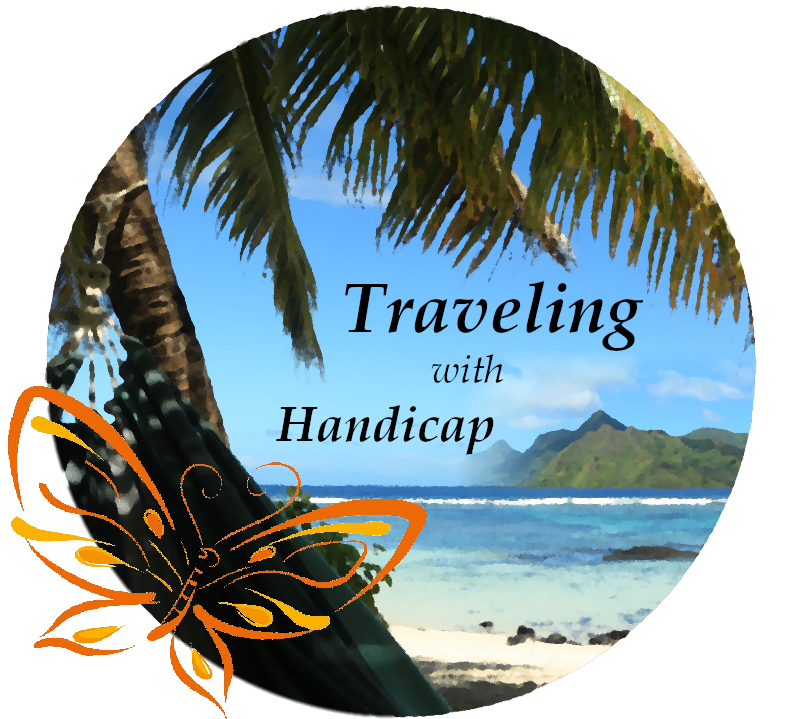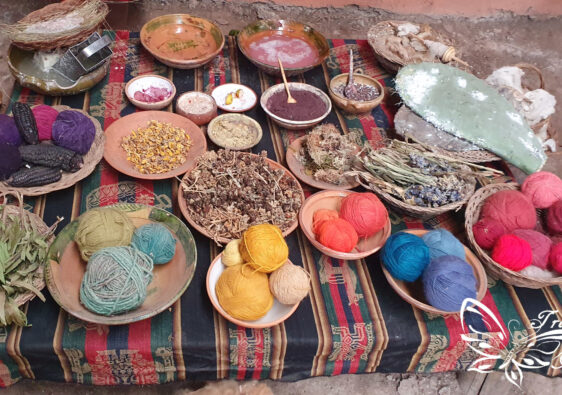Everybody in Argentina can remember the hand of God in the England match in the 1986 World Cup.
Now, in my country, the hand of God has brought us an Argentinian pope.
Diego Maradona
Buenos Aires is huge, above 13 mio people live there. On a map, the city of Buenos Aires looks much bigger than it actually is. Indeed, the city is only a fraction of it, the “suburbs” are part of the province Buenos Aires. A river and a highway are marking the boundary between city and province. I didn’t visit the province, only parts of the city. Most likely, the more touristy parts.
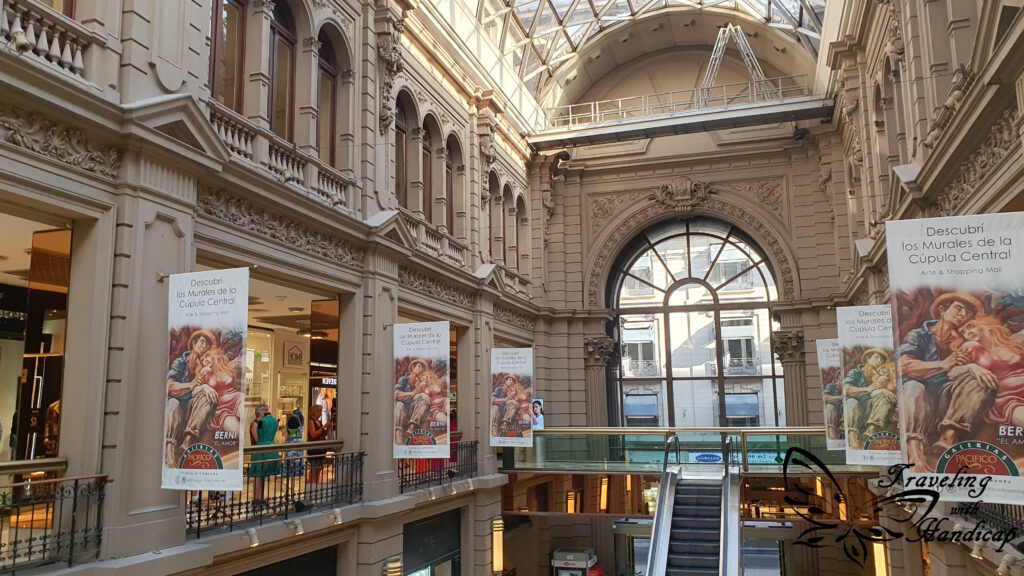
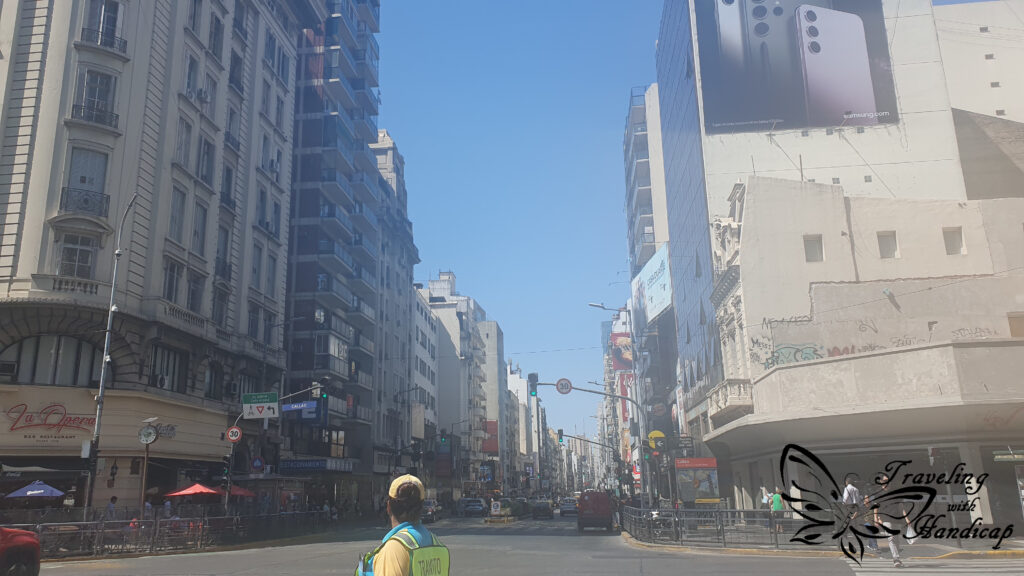
In this article, I am trying to list my favorite places with respect to the quarters. Firstly, I would like to recommend staying for at least 4 days to only see places. If you also consider visiting museums or would like to spend some time truly breathing in the atmosphere, stay for a week. There are better and worse areas to stay. One option is within the center, the many old and famous buildings. I personally stayed at two places, once in the center, another time in Recoleta.
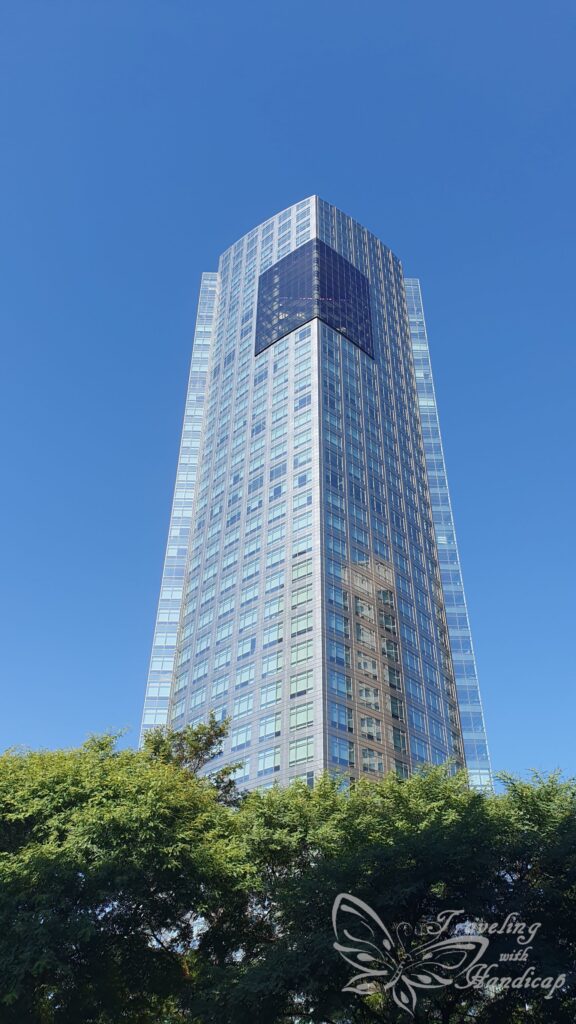
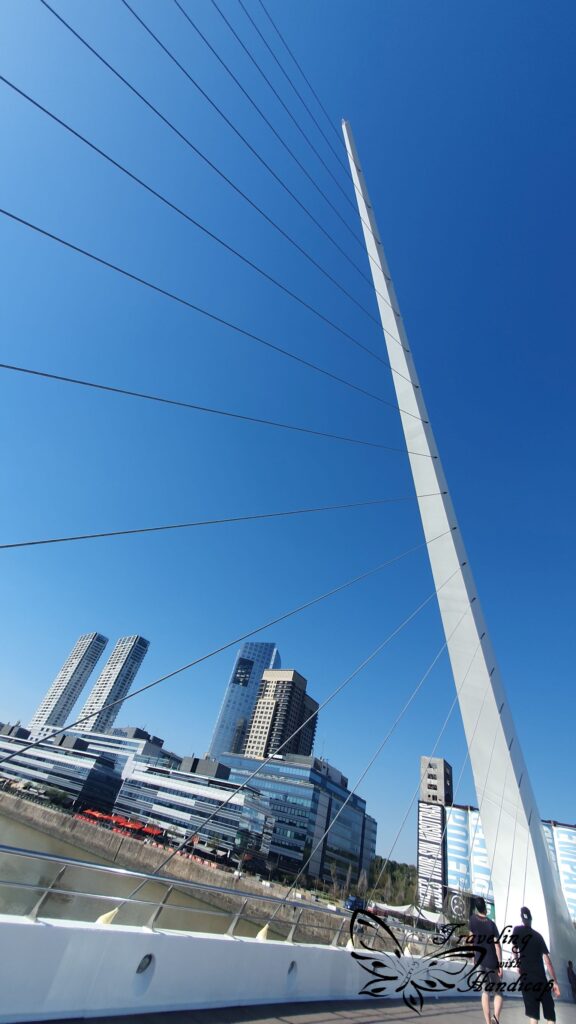

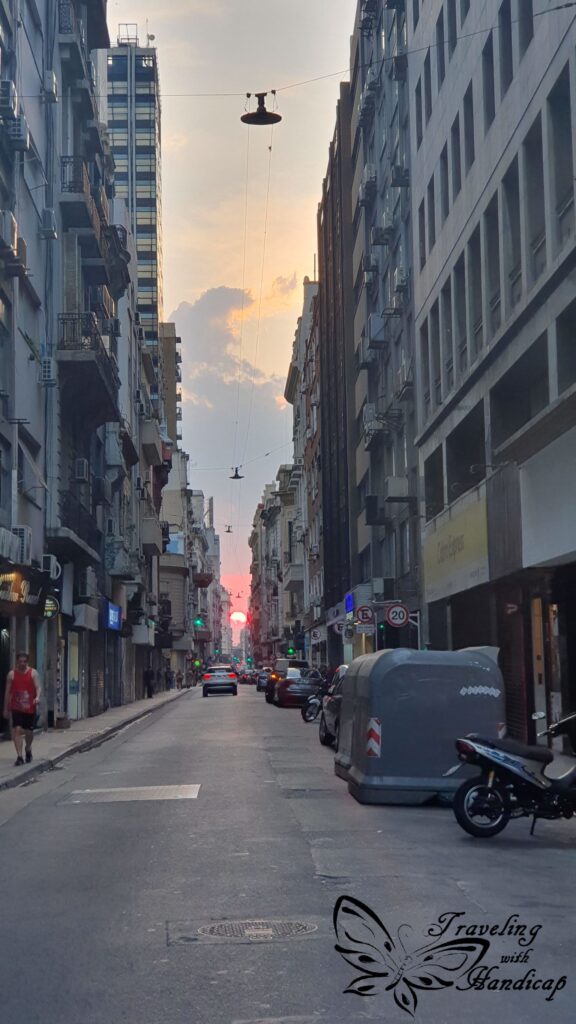

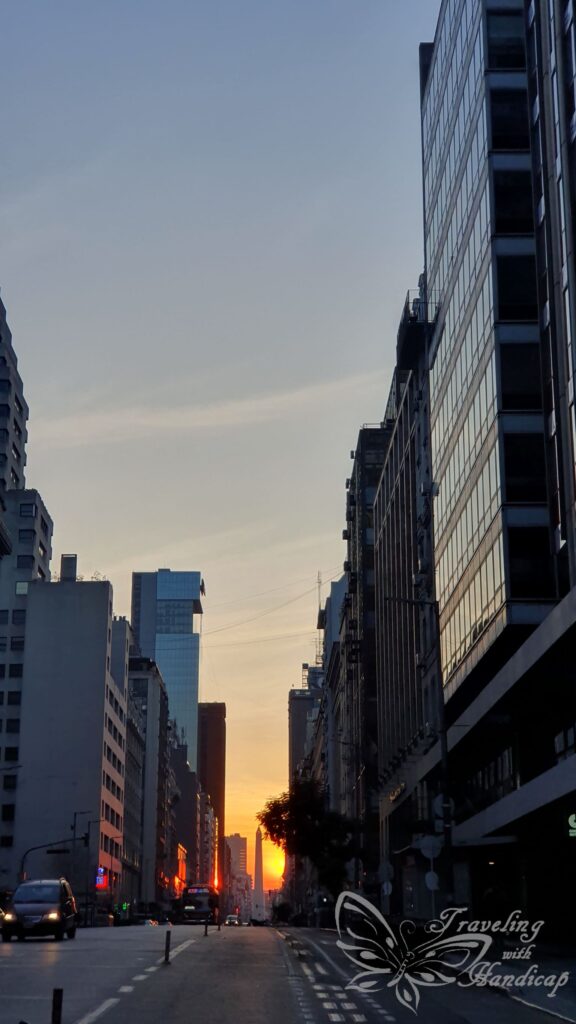
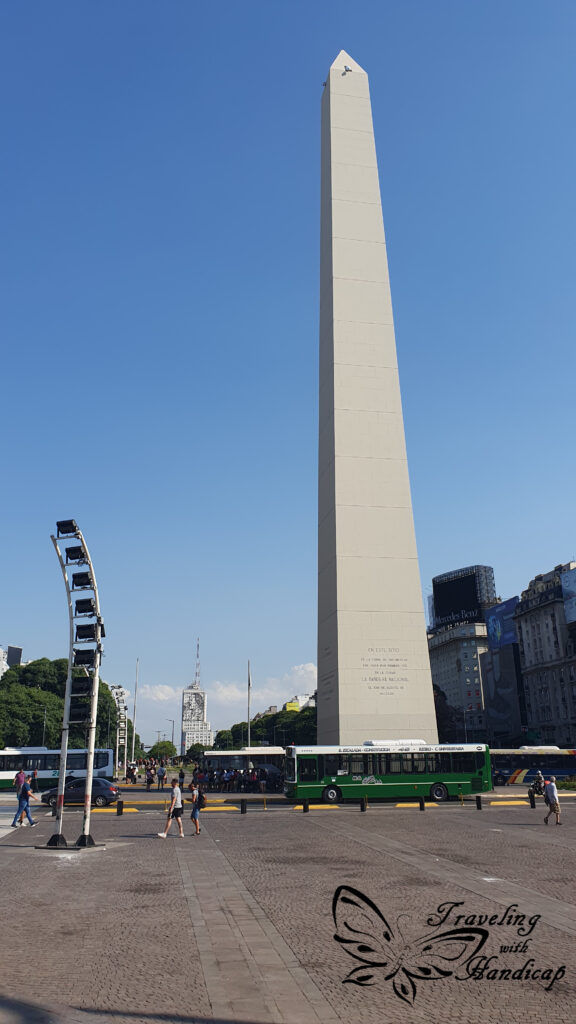


Where to stay
I preferred Recoleta since it’s a very safe neighborhood. You may also walk around in the evening, heading out for dinner etc. There are many buses to all parts of Buenos Aires, and people on the streets look a lot better and happier than within other quarters.
I stayed in the Casa Franca Recoleta Hostel (self-paid, no marketing). I would like to mention it since this hostel is wheelchair accessible. Indeed, this is rare to find. I also felt very safe there, and it even had fast Wi-Fi, including a coworking space. The owner was very helpful to everyone who mentioned some needs, no matter what. I had a deep conversation with him regarding accessibility. Also, the staff was very friendly and helpful.


The Quarters
Center (approximately San Nicolás)
- Plaza de Mayo with the Pink House: walk around the Plaza for some photos, maybe watch a group of people demonstrating
- Barolo Palace: walk from Plaza de Mayo to Barolo Palace and enjoy the architecture of the buildings
- Nacional Congress: nice buildings continue from the Barolo Palace to the Nacional Congress, which reminded me of the Capitol
- Colón Theater: a must-visit, do a tour of the interior. I was really impressed by the architecture, the different materials having been brought from different places in Europe, and the French influences.
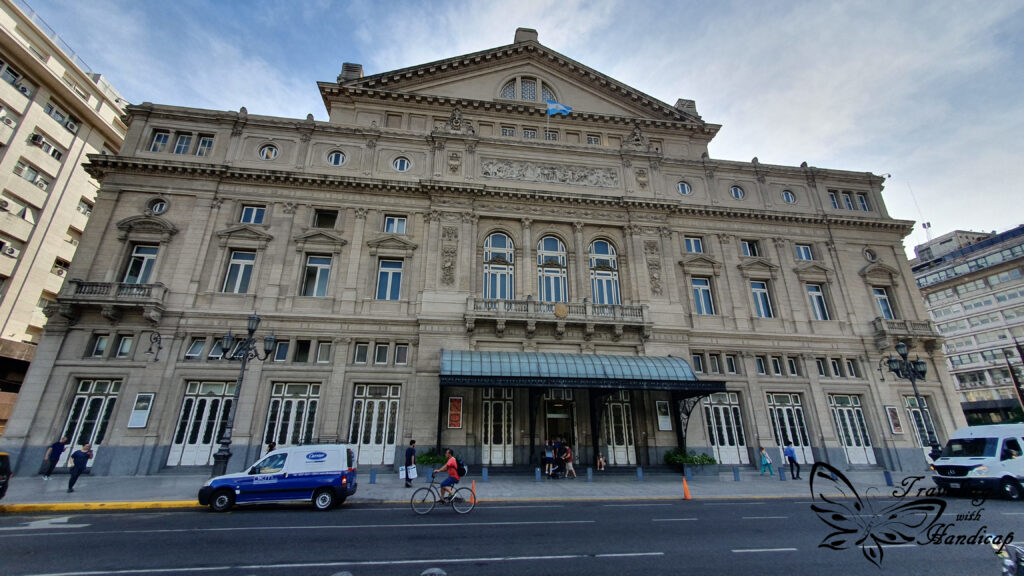

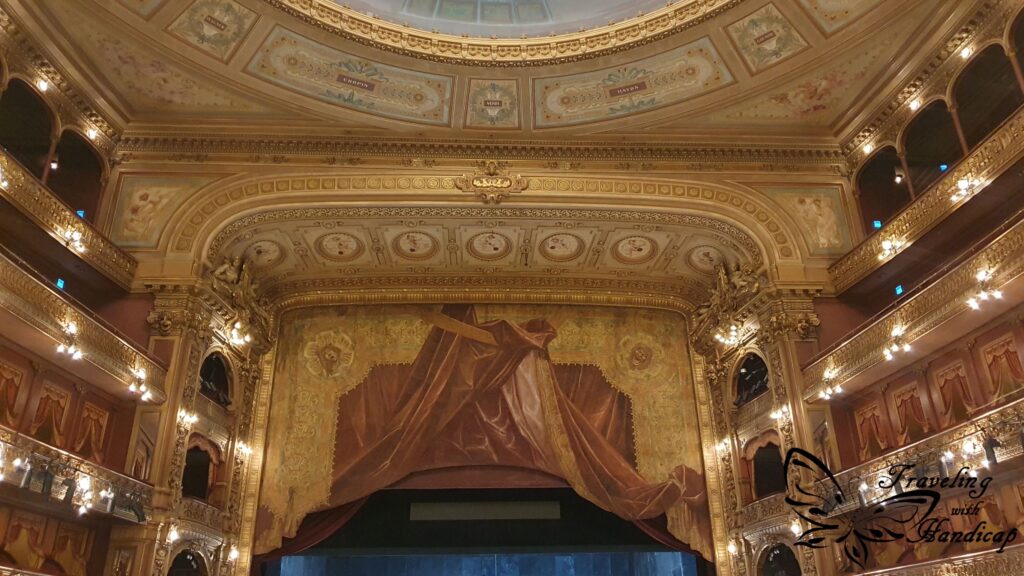
- Plaza San Martín: good view on both the center and the business buildings of Puerto Madero (this square already belongs to the Retiro neighborhood)
During my first days (before going to Uruguay for a few days), I stayed in the center, within walking distance to all these places. This is convenient, but definitely not necessary. There are plenty of buses from Recoleta to the center, so another time I would spend all my time in Recoleta.
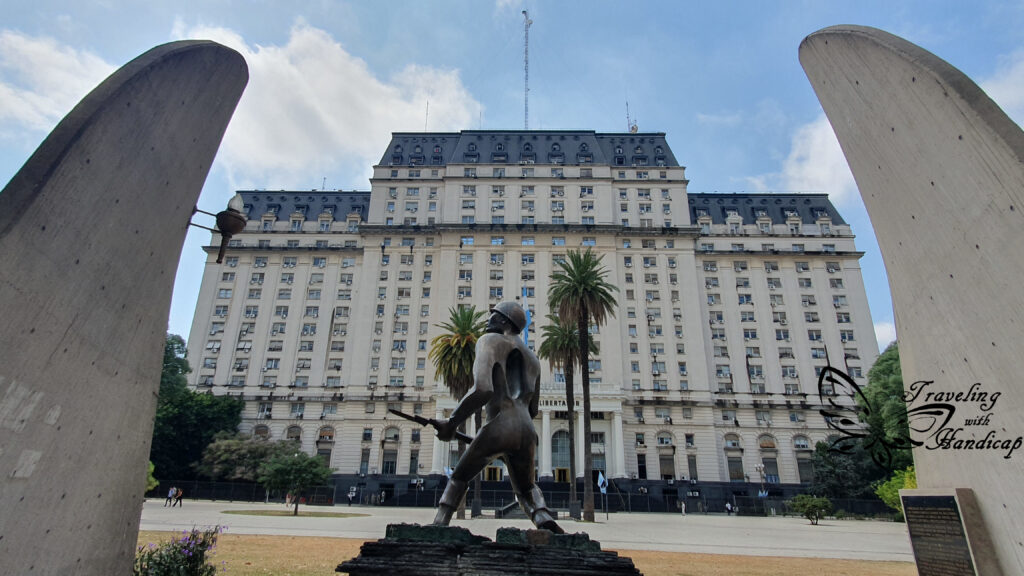

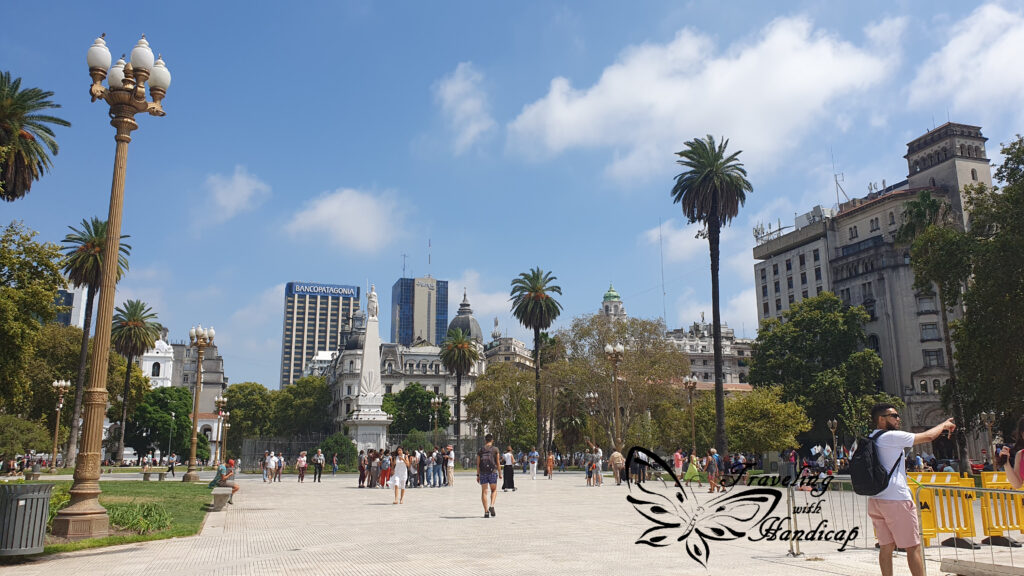
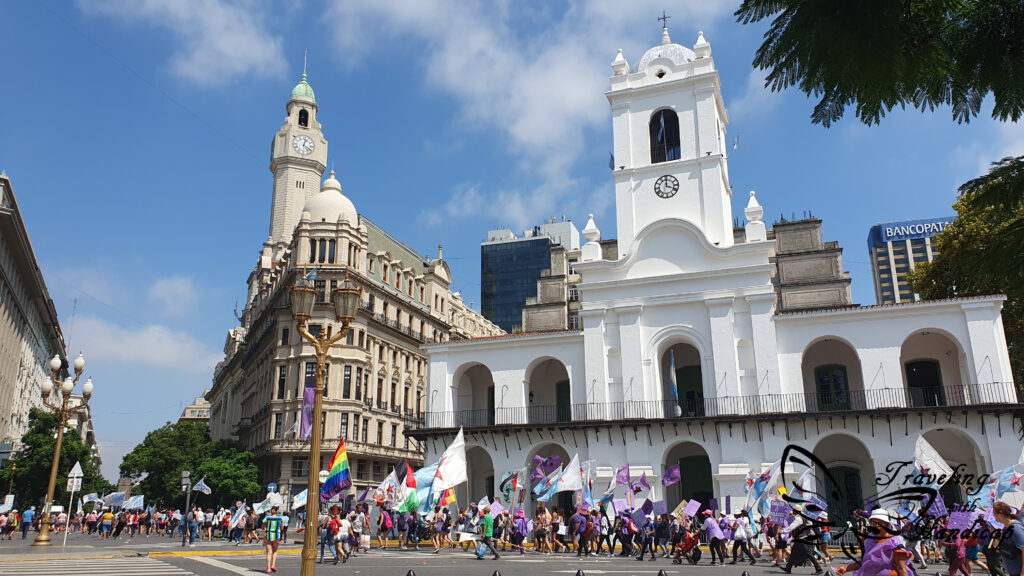

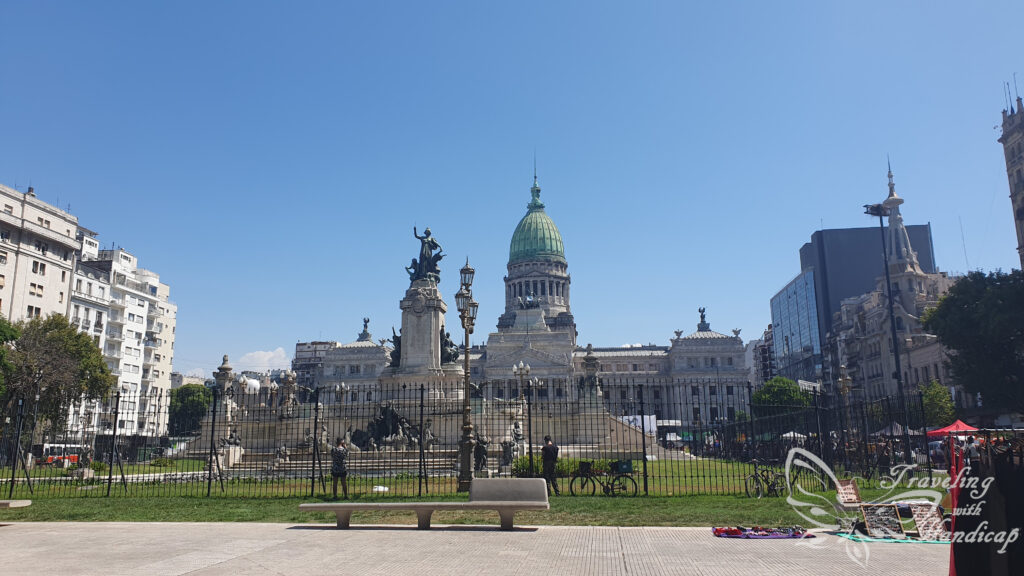
Puerto Madero
- Women’s bridge: when you cross the bridge (only walking, no cars), you have a great view of both Puerto Madero and the adjacent buildings of the center
- Many restaurants: at the waterfront, along both sides, there are many restaurants, both fancy-expensive and chilled-affordable
- Very new business buildings which reflect the sun quite well thanks to their glass windows. I enjoyed strolling along both the main road and the walkway along the water.



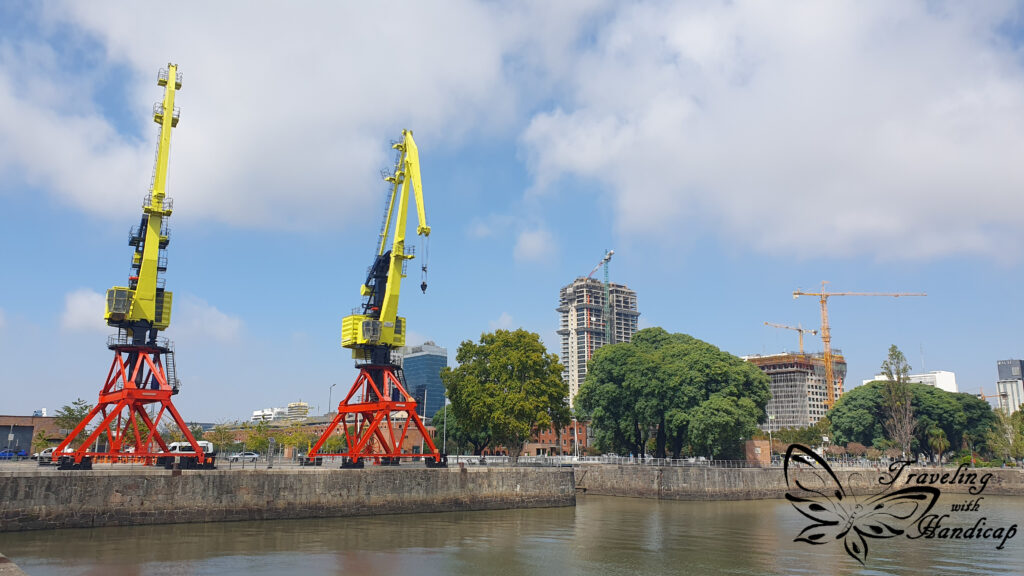
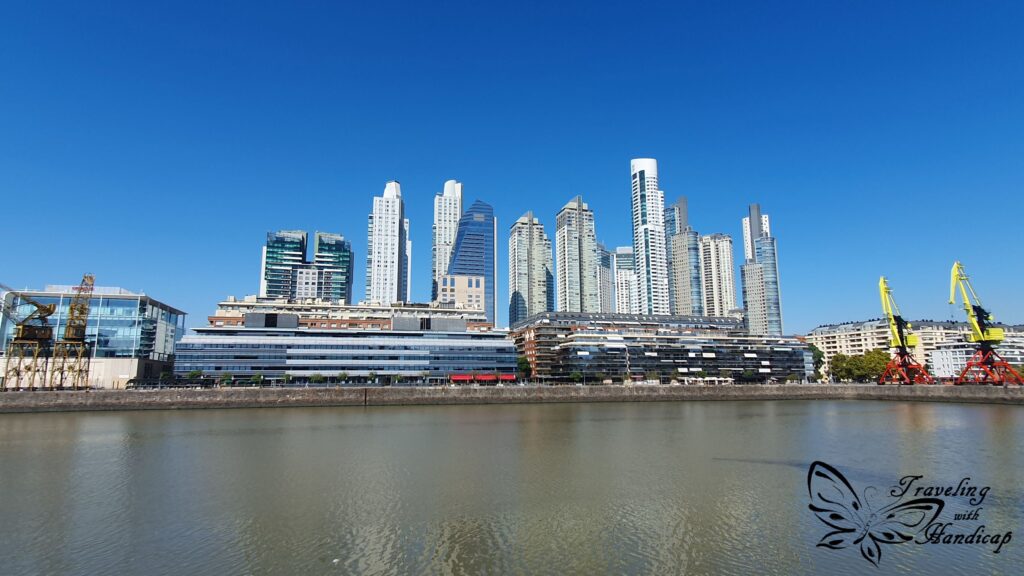
San Telmo
- strolling through the streets (during daytime)
- San Telmo market
Many streets are very small, you will spot beautiful architecture. Just take care of your belongings, some people on the streets within this quarter didn’t look too trustworthy.
La Boca
- El Caminito: very famous edge of streets, people are queuing for photos
- Arts-Quarter: the streets around the Caminito with all their colors and artworks. The walkway (Caminito) was abundant once, and an artist had the idea to create a colorful art-walkway.
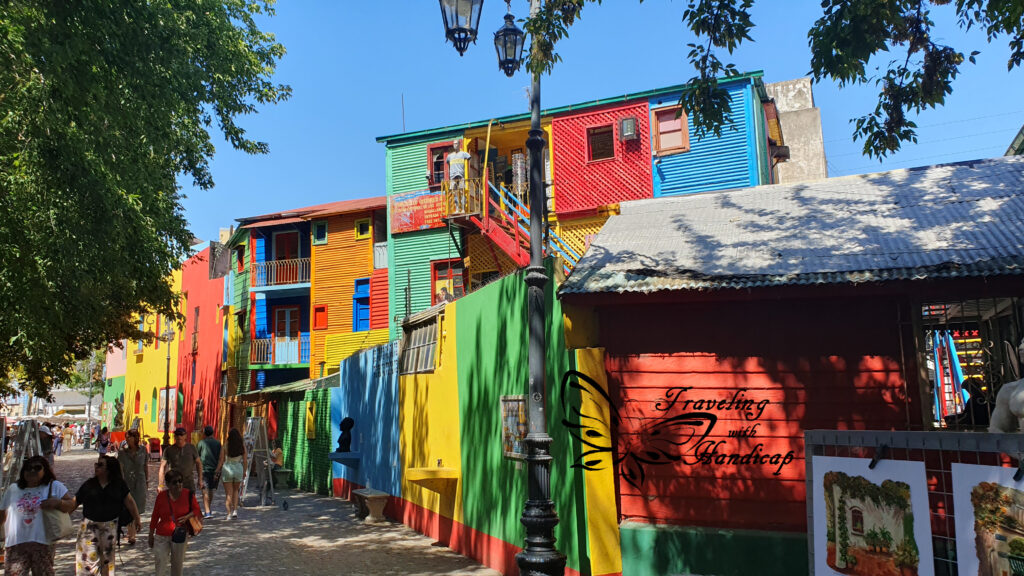
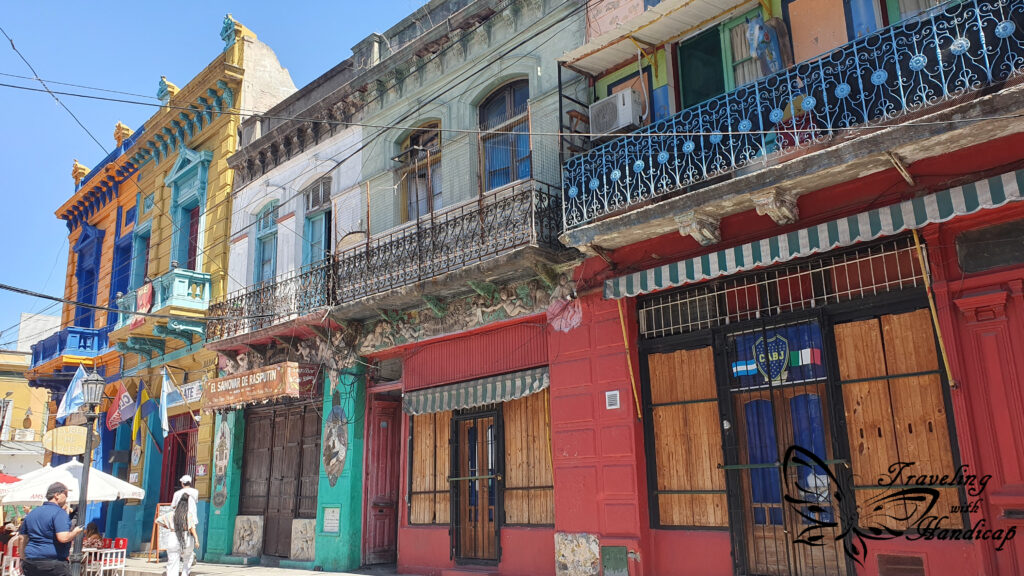

- La Bombonera: the stadium of Boca Juniors, which is very close to the touristy arts-walkways of La Boca. Within the whole touristy area around El Caminito, you can buy as many Boca Juniors dresses or souvenirs as you like, many people are dressed accordingly.
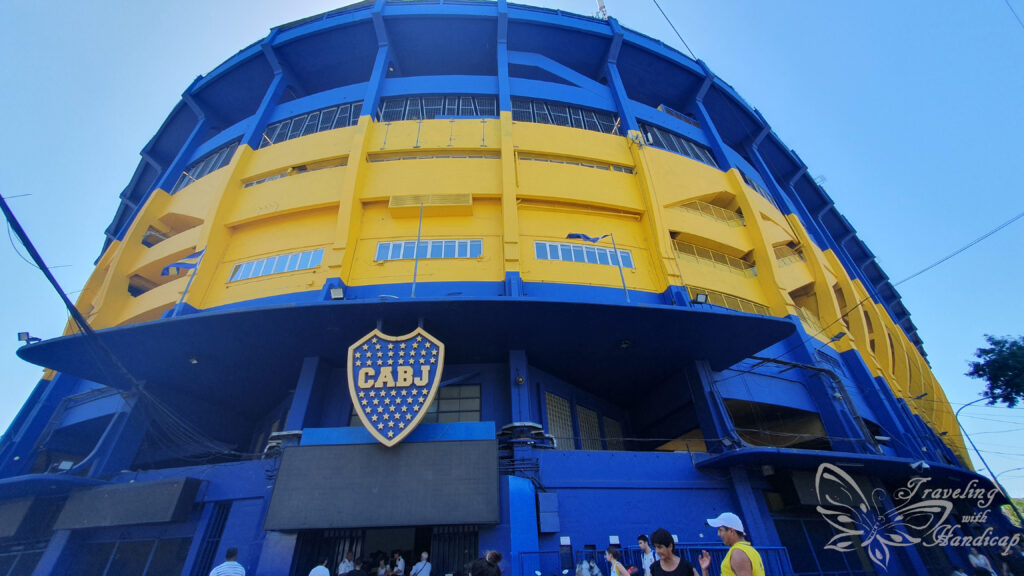
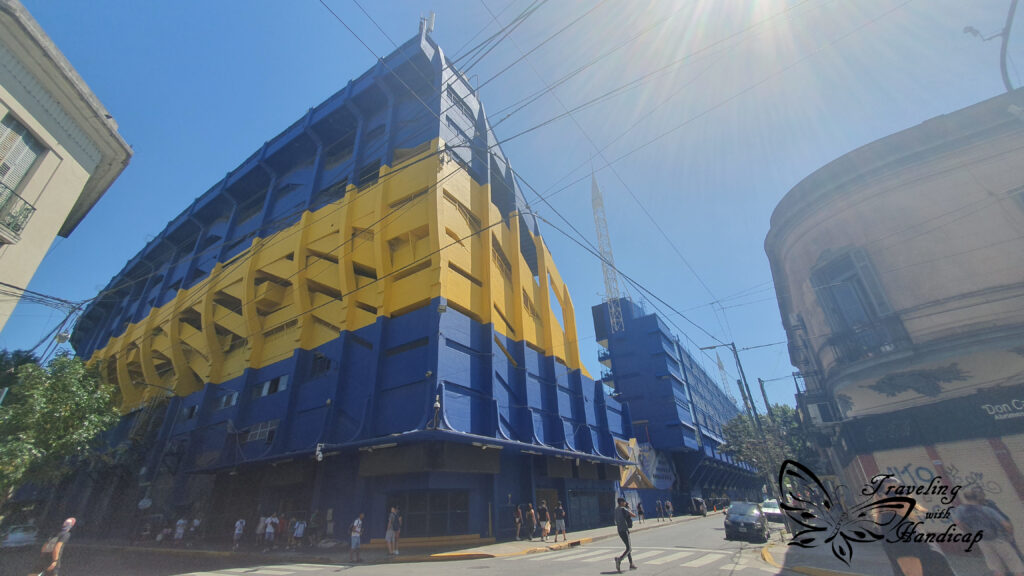
La Boca can be compared to The Bronx. Within specific streets, it has a certain atmosphere and flair during daytime. However, it should be avoided at all costs during nighttime. I heard that the rule of thumb is “visit around midday, have lunch there, leave before all shops are closed (by 6pm)”.
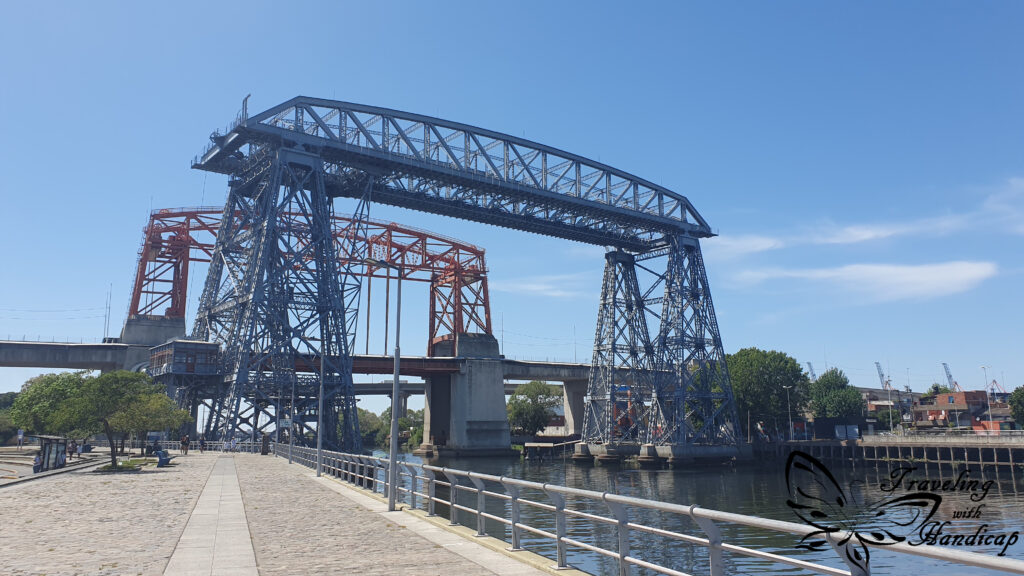

Football
- La Bombonera (Boca Juniors)
- Estadio Monumental Antonio Vespucio Liberti (River Plate) – in Belgrano
I like watching football matches, but as I have often been told that watching matches live in South America is not the safest thing to do, I went for visiting the stadium. La Bombonera was not open for tourist tours, only the museum, so I didn’t enter anything. As you are talking about the “Clásico” whenever Barcelona and Madrid compete, the expression “Superclásico” represents all matches between the Buenos Aires teams Boca Juniors and River Plate. So I tried to visit the Estadio Monumental of River Plates, and I was lucky to get on a short tour into the stadium.
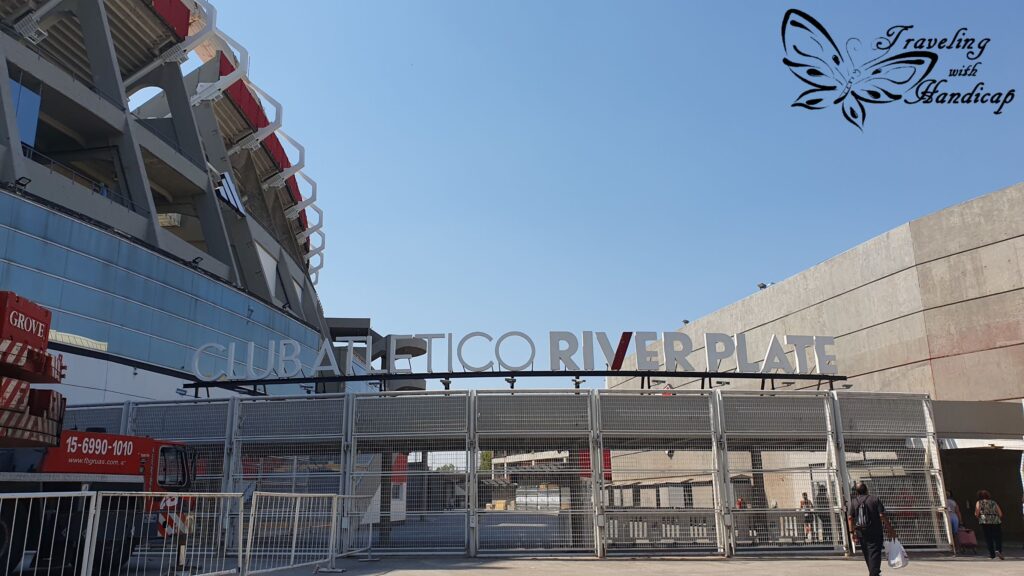

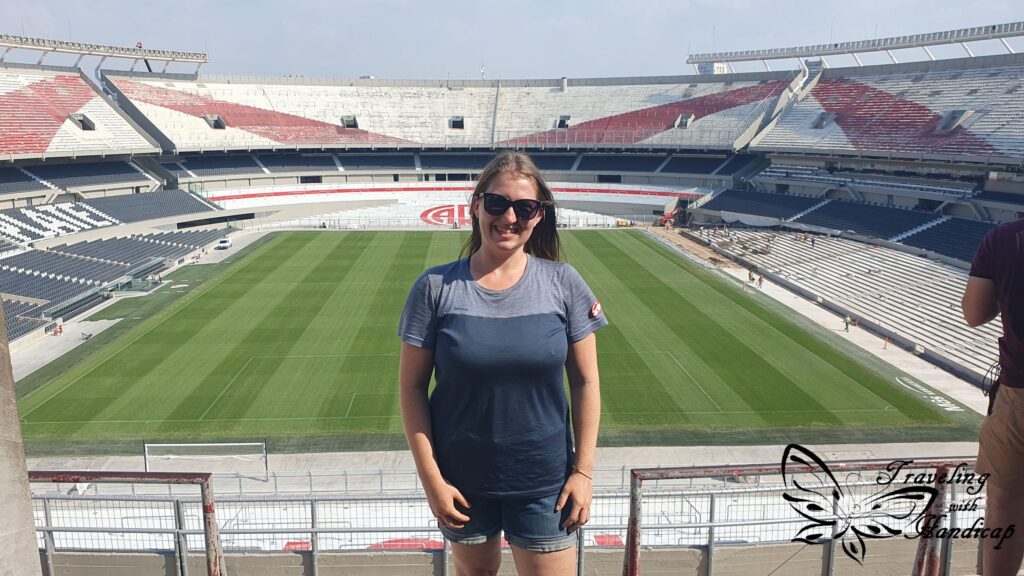
Recoleta
- Recoleta Cemetery: Famous cemetery, is even accessible. I got free entrance, showing my German disability card. Famous people are buried there, it’s still in use, so you might both identify famous names and very new dates. The mausolea are often little chapels by themselves.
- Iglesia de Pilar: next to the cemetery, small and pretty
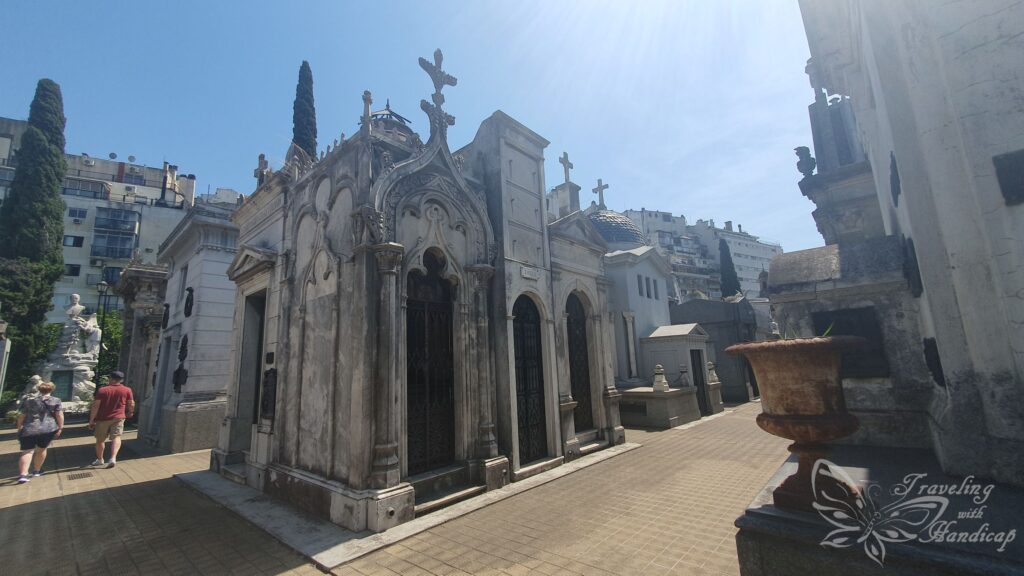
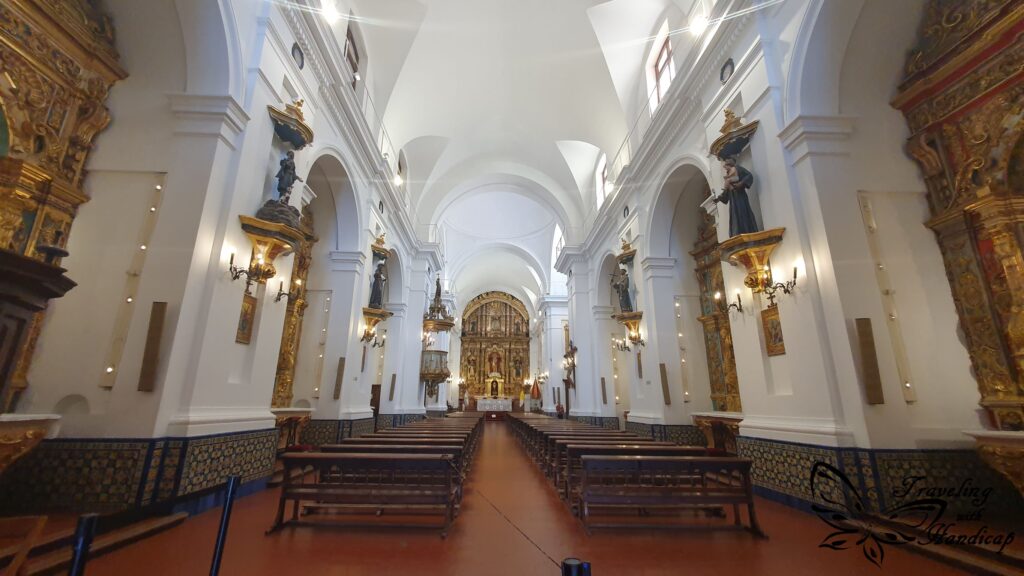

- El Ateneo Library: a former theater which has been renovated and transformed into a big library. There are many libraries and bookshops across Buenos Aires, though this one should be visited! (Already in Córdoba I recognized many bookshops, libraries, and even street markets selling ancient books)
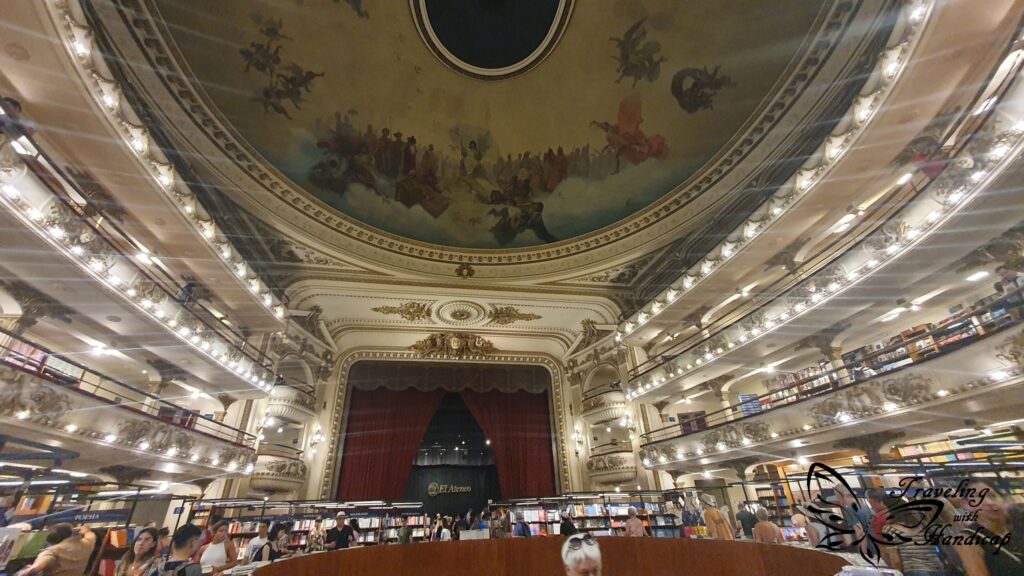
- Florales Generalis Statue: Right next to the Facultad de Derecho, there is a park with a circular statue representing a flower. Don’t only go to the park with the flower, also the building of the Facultad de Derecho is quite impressing. When I visited, there was an art exhibition. There are many parks within this area, great for strolling around and enjoying the flowers and trees (that provide valuable shade during hot days of sightseeing).
Many of the famous museums of Buenos Aires are located within Recoleta. I am not really a museum person, if you are into visiting them, plan more days and check their opening days and times beforehand. Moreover, Recoleta is my preferred place to stay (book accommodation).

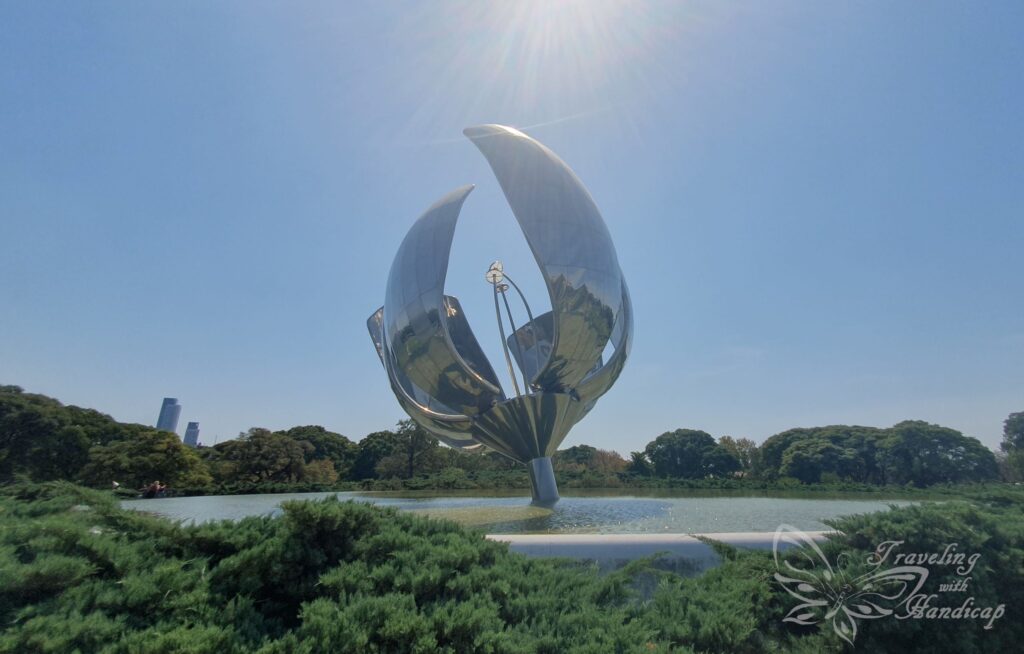

Palermo
- Japanese Garden: this garden is bigger than the Japanese Garden in La Serena and, honestly, a little more authentic (considering my experience of Japan). I recommend visiting at the end of a sightseeing day, since the music in the background is very meditative and relaxing.

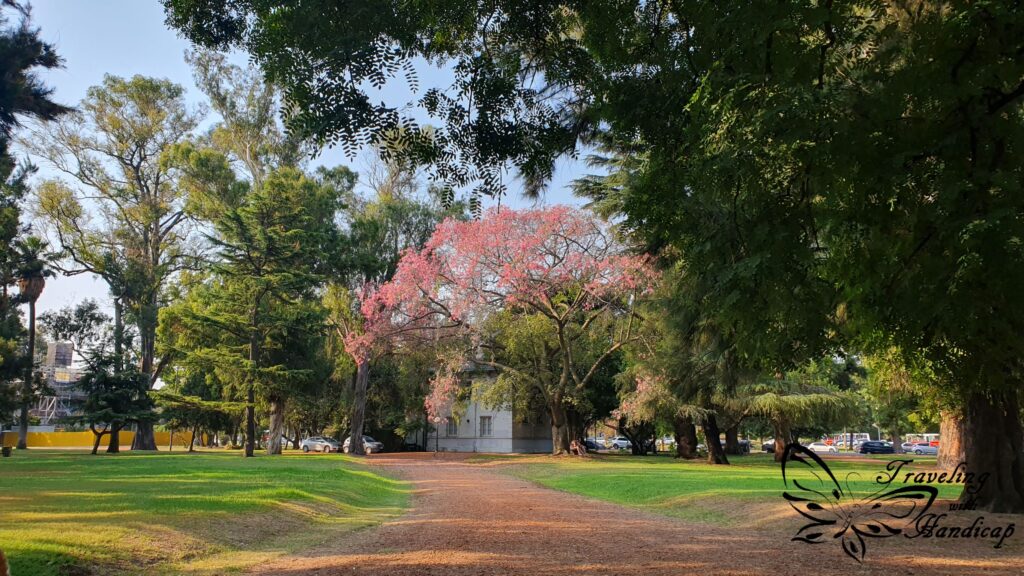

- The many parks: beyond the Japanese Garden there are many green areas, little and bigger parks, in Palermo. Most of them are between the Avenida Leopoldo Luugones and the Avenida del Libertador.
- Plaza Serrano (with its market): central place and hub of Palermo, surrounded by many pubs and restaurants.
- Neighborhood of Plaza Serrano (Graffiti): which is characterized by rather smaller buildings but many colors, especially graffiti art. Quite hip neighborhood, famous among backpackers, considerably safe also at night.
The parks of Palermo are quite accessible by bus, since the two Avenidas are frequented by different lines. Nevertheless, reaching Plaza Serrano is a little more tricky if you prefer direct connections, since there are not many. You might have to consider walking a few quarters because many lines stop somewhere nearby.
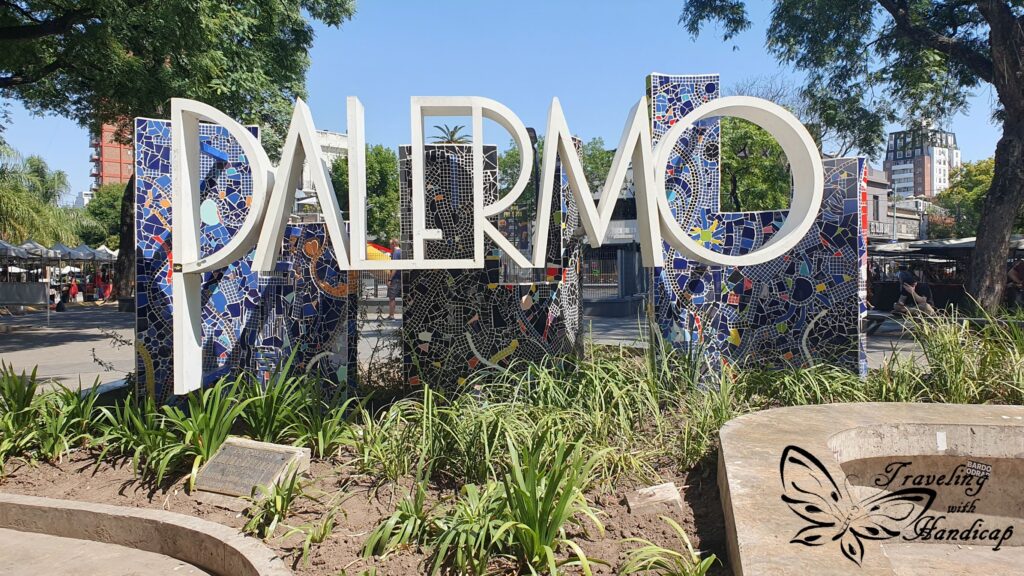
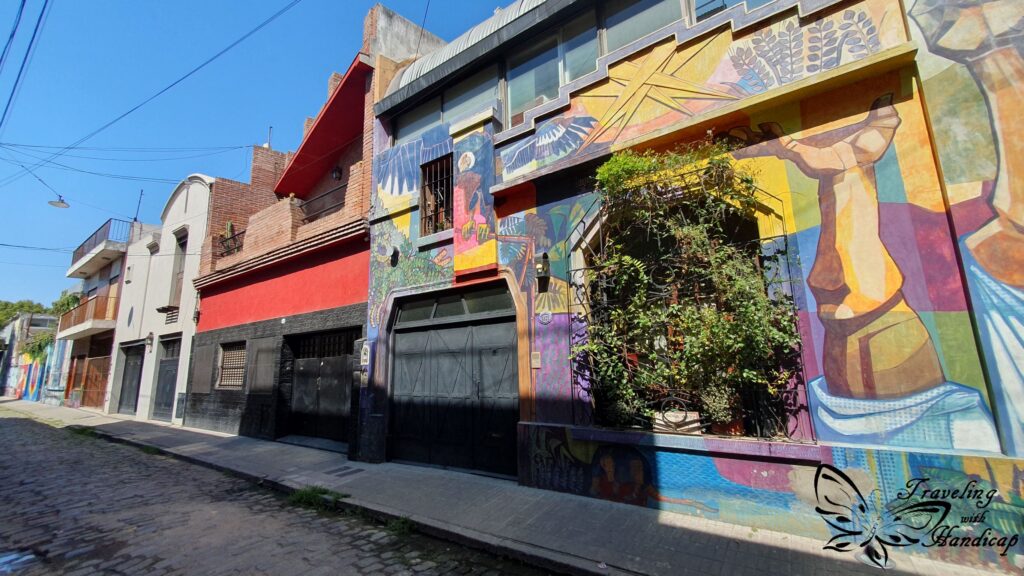
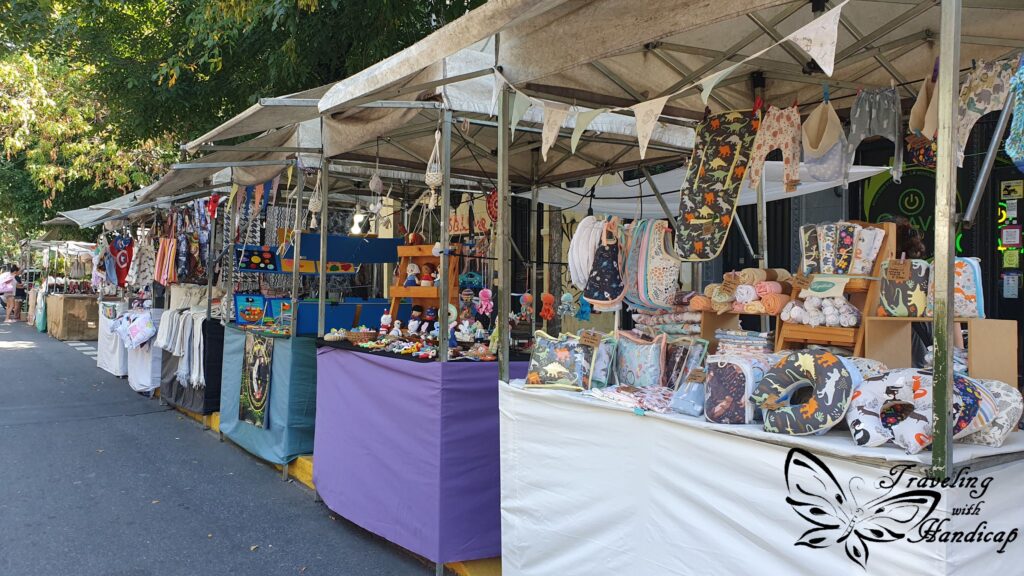
How to get around Buenos Aires
Bus and Metro within Buenos Aires
I recommend getting the SUBE card because it is the form of payment for all public transport across Buenos Aires. I really appreciate that this little card (size of a credit card) is valid across Argentina (except for Córdoba, which needs their own card). Taking the bus or metro (underground, SUBTE) is very easy and incredibly cheap, so I really recommend using public transport. Just upload a little money and go. When I stayed in Buenos Aires, a bus ride was ~ 45 Argentinean Pesos, approximately 0.18 € (don’t consider this number fixed, the inflation is huge, so both prices and exchange rate change continuously).

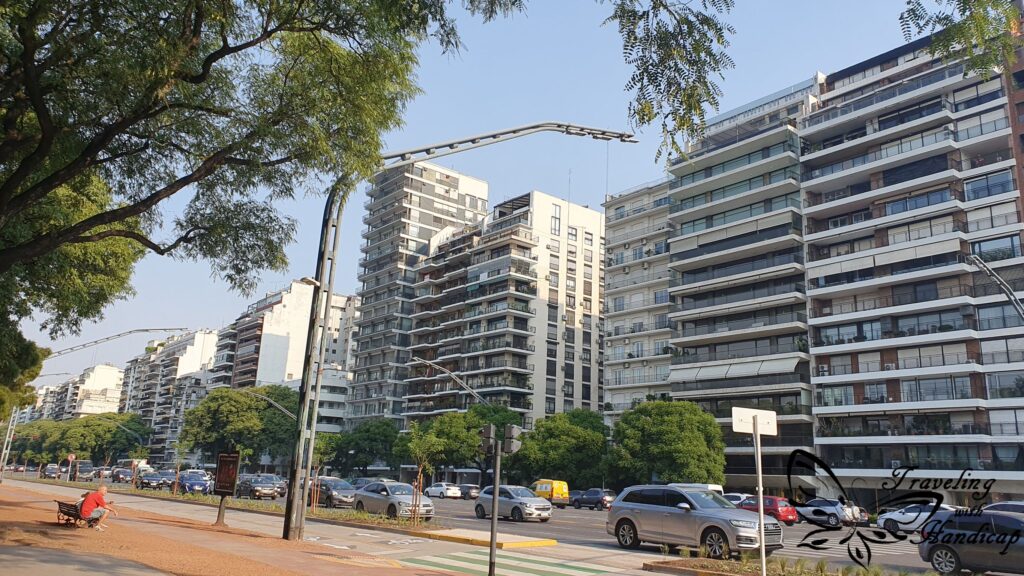
How to: Bus
- You walk to a bus stop for your respective number (at the big bus stops, stickers refer to which number will stop where)
- As soon as you see your bus approaching, you continue waving to the bus-driver until he stops
- You enter the bus at the front and tell the driver your (approximate) destination
- The driver selects your fare based on your destination (in Buenos Aires there are “short distance fares”, in e.g., Bariloche all fares are the same) and you tap the SUBE card on the machine for payment
- Walk to the middle or back door one stop before your desired stop and press the “I want to get off” button
- Get off at the middle or back door
How to: Metro
- Walk down the stairs to the station you need
- Swipe your SUBE card for payment (fixed rate, free during some hours at night – even though I wouldn’t want to take it during the night) and enter
- Walk to the respective track you need and jump on the next train
- Exit without any further swipes or checks
Without an Argentinean sim card, thus, without internet on the way, it is a little difficult to identify the bus to your next destination. You might have to pre-plan your major distances of the day by screenshots whenever you have Wi-Fi access.
It is important to mention, though, that the public transport of Buenos Aires is far away from being accessible. There are almost only stairs to get to SUBTE (metro) trains, sometimes escalators but not more. The large majority of buses has two spaces dedicated for wheelchairs, even with respective belts. However, sometimes the clapping ramp is broken, sometimes not even existent. Honestly, I have never seen a person in a wheelchair taking a bus during my whole time in Buenos Aires.
Airport
The airport is very much in the city. If planes are landing or starting, you do hear it, it’s louder than any other random sounds of the street. It’s a convenient location for an airport, you don’t have to go to any suburbs. Nevertheless, I do understand people who live close to an airport and complain about its noise. Luckily, there are by far not as many flights from and to Buenos Aires compared to the big Airport hubs in Europe or Middle East.
Train Station and long distance buses
The Retiro station combines both the train station and the adjacent long distance bus station. It’s not the best neighborhood to depart or arrive during the night (then better take a taxi). During the day, take care of your belongings, I even watched a robbery while walking along the street. People seem to ignore it because it might be too normal for them to happen.
Originally I wanted to take the train from Buenos Aires to Tucumán, however, I couldn’t book the ticket online for some missing Argentinean ID credentials. Additionally, I was confused because the Retiro train station was within a renovation process and I didn’t fully understand where the trains would depart if so. I have been told that taking trains is not as common in Argentina and that they are rebuilding the rail network and trains (removed the old ones). So I stuck to the bus (again). It would have been an experience taking the train because there are not many trains across South America.
Ferry
Uruguay is quite close to Buenos Aires, so if you are in Buenos Aires, you should consider checking out Uruguay. It is possible only as a day-trip to check out Colonia del Sacramento if you take a morning and an evening ferry. The ferry ride itself only takes approximatels 50 minutes. What takes another hour is the immigration process. I went to Montevideo by bus and took the ferry from Colonia del Sacramento, to try out both options.
Honestly, both were good with the exception of waiting for one hour carrying all the load of backpacks, just to do the immigration in Argentina. Next time, I would take the ferry twice, just because all buses from Buenos Aires to Montevideo are night-buses with border-crossing after midnight, so not the best journey to sleep.
Buenos Aires and …
… the pope
When I arrived in Buenos Aires, I saw many posters referring to a mass at a specific cathedral to celebrate the 10 years of Pope Francis who was born in Buenos Aires. Sure, football is everything in Buenos Aires and Argentina, don’t make the mistake to talk bad about Messi for example. Nevertheless, the pope reached the same level as the football stars. I have seen many fun statue combinations of foodball and pope, like this one in La Boca.

… tango
Honestly, I expected more street musicians as I have seen many in Córdoba. In Córdoba, I learned that many street musicians play the Cuartito, another type of music from the region. I also assumed there would be squares like in Sevilla, Spain, where you would have some drinks and at the same time watch people dancing. However, nothing of this was true.
Instead, people dress in tango-wear on the street and ask for money if you want to take pictures with them. Or you go to a Tango show into one of the cafes/restaurants which have a stage. Even though I would have preferred an experience as I imagined it, I couldn’t leave Buenos Aires without seeing Tango. There are different locations offering the Tango shows. Depending on where you book, prices vary – expensive hotels try to also earn something. So the best way to save money is to reserve directly with the restaurant.
These shows often offer the options of dinner included, with or without pickup-service , or only watching the show and paying for your drinks. I went with the all inclusive option, pickup, 3 course dinner, a lot of wine and the show. I went to Café de los Angelitos, an often recommended place. Dinner started by 8:45 and after dinner the show lasted until almost midnight. The atmosphere within the Café was great as well. Moreover, I got to know people from Brazil who asked me to get in touch with them as soon as I plan to visit their cities in Brasil.
… food
Mainly Spanish and Italian people moved to the region which is Argentina in our days. Sure, people from other countries as well, though rather as minorities. As such, the Italian kitchen has a big influence. Apart from the wine in and from Mendoza, the milanesa (quite similar to our Schnitzel), lomo (meat-dish) and other meat dishes, Pizza is quite popular.
Argentineans have four meals a day, breakfast, lunch, “merienda” (tea time, which by the time I would consider as the bavarian “Brotzeit”), and dinner. While they have similar stuff to eat for brekkie and merienda, lunch seems to be bigger, dinner very late and not as much since they’re already quite full. If you go out partying in Argentina, don’t expect anything happening before midnight, instead until the early morning.
